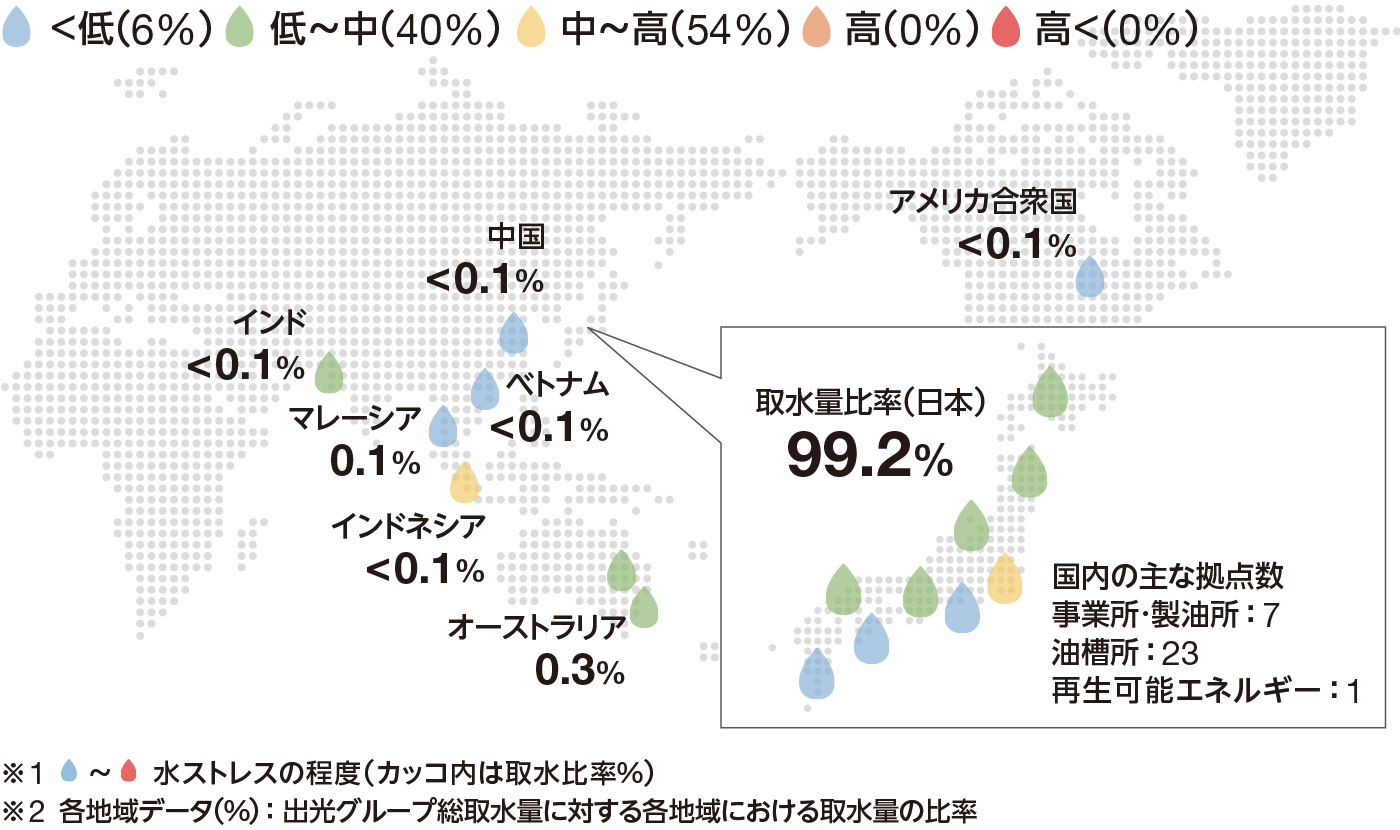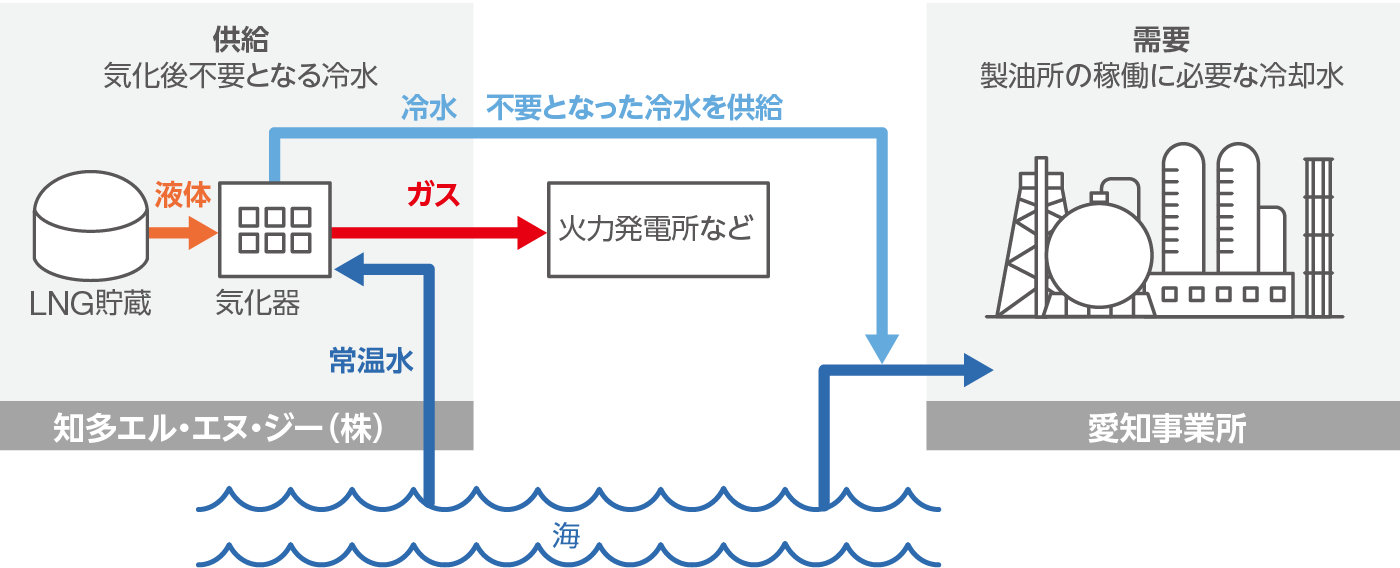Water Resources
Basic approach
The Idemitsu Group's water risks are managed in group-wide risk management as part of ''risks due to changes in the external environment surrounding our business,'' ''risks due to natural disasters and accidents,'' and ''risks related to climate change and environmental regulations.'' I am.
Under the "Environmental Conservation Policy," we set goals and conduct wastewater treatment to meet national and local government standards in order to prevent pollution, use Resources effectively, maintain biodiversity, and other aspects of our environmental management system. We are incorporating it into practice.
Policy
Governance
Strategy
Our group strives to understand the use of water Resources on a global scale, and uses AQUEDUCT information from the World Resources Institute (WRI) as a reference to confirm water-stressed areas at our business locations. Although none of our group's domestic bases are located in areas with high water stress, the combined water intake ratio of our seven Refineries/Complexes accounts for 99% of the group's total water intake. For this reason, we will thoroughly manage water Resources in Japan and work to reduce water usage and use Resources effectively by recycling water resources.
Our group also operates businesses in countries and regions where water Resources are not necessarily abundant. Water Resources issues around the world are becoming more and more serious, and it is said that there are situations and regions where it is difficult to obtain safe drinking water. Recognizing this current situation, we have begun efforts to focus on overseas countries and are disclosing water stress maps.
●Water stress map of our group's main business locations



Risk management
Initiatives
Strengthening the recycling of water at Refineries/Complexes
Refineries/Complexes use large amounts of water, so we not only comply with wastewater standards but also strive to reduce water usage. We are also working with other companies to reduce water usage.
Refinery require a certain amount of water (seawater or fresh water) to cool process fluids during the oil refining process. The fresh water (warm water) used for cooling is circulated through an air-cooled cooler and used again as cooling water for process fluids, in an effort to reduce the burden on the environment. As a business that uses water, we will continue to strive to further recycle water Resources.
●Industrial water recycling
|
|
|
|
|---|---|---|
|
|
|
|
|
|
|
|
-
Target of calculation: Idemitsu Kosan consolidated refining companies (TOA Oil Co., Showa Yokkaichi Sekiyu Co., Seibu Oil Co.) and major consolidated companies (Seibu Oil Co. becomes a consolidated company from June 2022 onwards) including)
-
The water recycling rate applies only to "industrial water" ①Industrial water intake: 87,649,000 t ②Industrial water usage: 1,147,934,000 t ③Industrial water recycled: 1,060,285,000 t, water recycling rate = 3/ ②). ②=①+③.
Reducing water usage in collaboration with other companies
At Aichi Complex, cold water is interchanged in the industrial complex to reduce water consumption. By effectively utilizing chilled water discharged from the LNG vaporizer of the neighboring Chita LNG Corporation as process cooling water, we are contributing to the reduction of water intake in the entire Chita area. This initiative is supported by the Petroleum Complex Advanced Integrated Operation Technology Research Association (RING).
●Cold water distribution through collaboration within the complex



Initiatives for water quality management
When using water Resources, it is also important to manage water quality when returning used water to the environment. When wastewater is discharged, it is treated with multiple equipment to raise the water quality to a level that does not have a negative impact on the environment, and then returned to the natural environment. As a result of these constant efforts, based on the definition of environmental abnormality, there was one violation of laws and regulations related to wastewater quality management in FY2022 (Oil-containing wastewater spilled into the sea: Oil-containing wastewater overflowed from a manhole due to heavy rain, and the rainwater drainage line (contaminated with water and spilled into the sea).